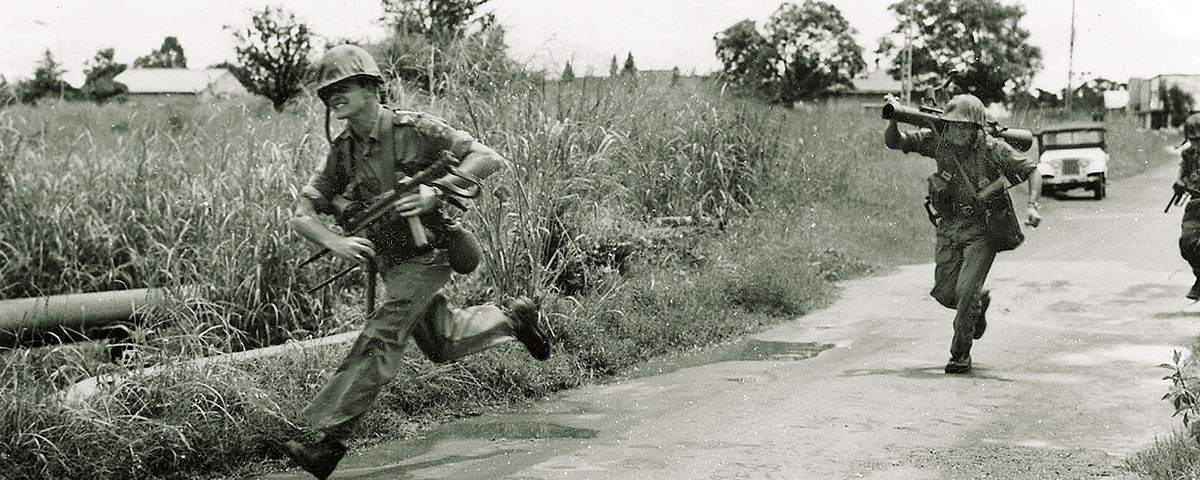On June 30, 1960, amid violent riots after 52 years of colonial rule, Belgium reluctantly granted independence to Congo. No longer satisfied with the status quo, black enlisted men in the Force Publique (Congo’s military) mutinied against their white Belgian officers, and the country soon erupted in anti-white violence. Prime Minister Patrice Lumumba subsequently Africanized the military as the Armée Nationale Congolaise, prompting Belgium to deploy its own troops to safeguard white citizens. Lumumba in turn petitioned the United Nations for the removal of the Belgian troops. The U.N. Security Council passed a resolution to that effect and ordered peacekeeping troops to the country.
On July 11, four days before the first U.N. troops arrived, the southeastern province of Katanga, with support from Belgian troops and businessmen, seceded from Congo. The move augured financial collapse, as the majority of the nation’s revenue came from the mining region. The last Belgian troops left Congo proper by July 23, but Belgian and mercenary forces remained in Katanga.
As tensions threatened to erupt into civil war, the U.N. sent additional troops, and by early 1961 its peacekeeping force numbered 20,000 men. That August the U.N. ordered its “Blue Helmets” into the breakaway province. Their primary mandate was to arrest and repatriate Belgian troops and mercenaries, effectively ending the revolt. The troops lacked accurate intelligence and were ill equipped, carrying gear better suited to their original policing mission. Furthermore, the Katangese, white and black alike, largely regarded the peacekeepers as invaders.
Among the U.N. forces was the 158-man Company A of the Irish army’s 35th Infantry Battalion, led by Commandant Pat Quinlan. In early September the unit was sent to the remote mining town of Jadotville, 80 miles northwest of the Katangese capital of Elisabethville. Though most of Quinlan’s men were in their late teens or 20s and had never seen action, they had gained experience and developed a solid rapport while patrolling the region in previous weeks. They were armed with modern FN FAL battle rifles, but much of their supporting equipment dated to World War II, including Vickers machine guns, 60 mm mortars and a Bren gun.
Noting a buildup of hostile forces, Quinlan ordered his men to stockpile water and dig trenches. The assault came on the morning of September 13, as 3,000 Katangese soldiers attacked the garrison under the direction of foreign mercenaries. Though outnumbered 20-to-1, Company A held its ground for five days. Finally, on September 17, his unit’s ammo, food and water exhausted and with no orders to the contrary, Quinlan was compelled to surrender. Some 300 Katangese lay dead, another 1,000 wounded. Company A had suffered just five wounded.
After weeks of negotiations between U.N. officials and the Katangese, the Irishmen were sent home. Treated as outcasts for having capitulated, they were branded the “Jadotville Jacks.” Their reputation was somewhat restored by a 2016 film about the siege.
Lessons:
Accurate intelligence is crucial. Poor intel led to a breakdown in U.N. planning, resulting in Company A’s placement in an untenable position.
Overconfidence breeds failure. Boasting better weaponry and numerical superiority, the Katangese sensed an easy victory. They miscalculated the resolve of the Irish peacekeepers.
Plan for the worst. Had U.N. commanders anticipated the worst-case scenario, Company A would have had adequate air and ground support.
Learn from your mistakes. The Congo Crisis was the U.N.’s first peacekeeping mission with a significant military component. It served as a training ground for subsequent operations, though U.N. forces again experienced setbacks in Rwanda in 1994 and Bosnia and Herzegovina in 1995.

